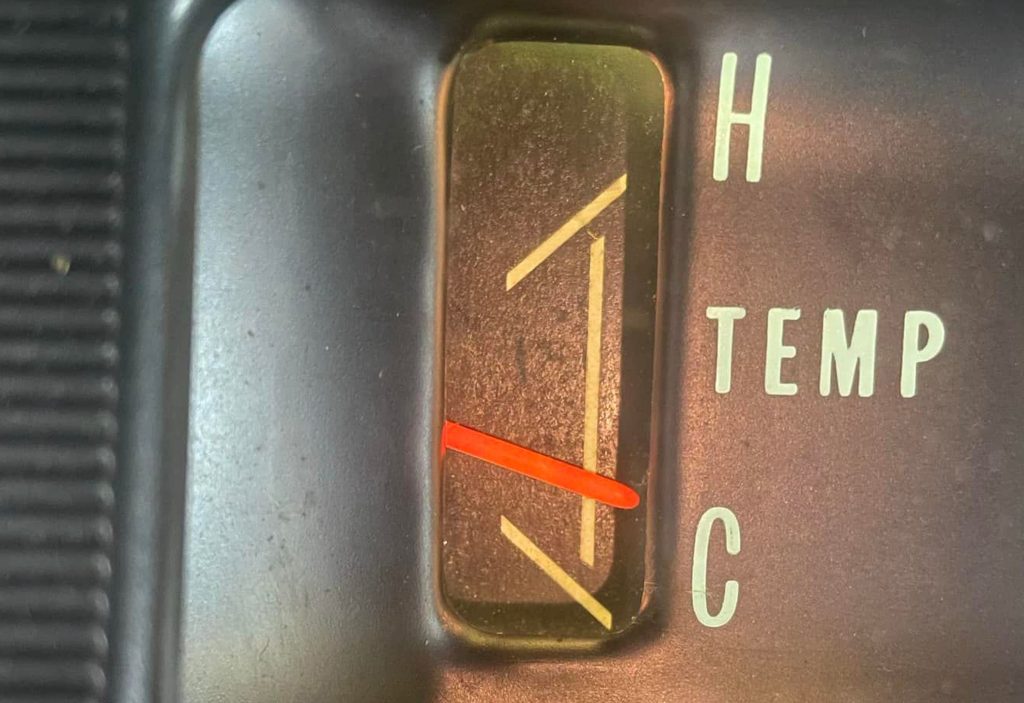Q: I’m trying to control the coolant temperature in my project vehicle. It’s got a new Chevy 350 engine block with a high-flow water pump and thermostat, plus I’m running a 30” x 19” aluminum radiator that gets plenty of airflow. I have tried a couple of different setups but the coolant temperature always creeps up slowly.
I would like to know if a four-row copper and brass radiator would be more efficient than a two-row aluminum unit. Also, what’s the optimum operating temperature for a small block Chevy? Finally, where’s the best place to locate the temperature sender?

A: Great questions.
Aluminum dissipates heat more efficiently than copper and brass, so it gets the job done with fewer rows of tubing. Plus, it’s lighter and that’s always an advantage when it comes to high performance.
An aluminum radiator with two rows of 1” tubing will provide cooling equivalent to four rows of copper tubing, and it should be sufficient to support up to 400 horsepower.
If your powerplant is pumping out more horses, you may need a radiator with two rows of 1¼” (up to 600 hp) or 1½” (up to 800 hp) aluminum tubing. As long as your ignition timing and fuel mixture are both correct, a properly sized radiator with an appropriate fan and shroud should keep things cool. A product like Red Line’s Water Wetter cooling system treatment may also be helpful because it can boost the cooling properties of water.
Ideally, your engine should operate at 180°F to make the most power. The temperature-sending unit can be located in the cylinder head or in the intake manifold.

Did you purge all the air out of the block / Heads. Google cooling system filler.
HUH, not much info here, I have tried that water wetter product (all brands) and did nothing, also have heard many say its “snake oil”
Yeah I bought Vp brand water wetter it did nothing
You didn’t specify when your “temperature slowly creeps up”. For your consideration, if it creeps up cruising on the highway you don’t have enough radiator. If it creeps up in town traffic, you don’t have enough fan, assuming a proper shroud.
I was thinking of trying some Hood vents.
If that is a picture of your car?
I noticed large pan in front of radiator (where hood latch is attached and no shroud)
I was wondering if you put some flared (DECORATIVE)holes in pan – would that help?
The picture isn’t at the best of angles for clear view of cooling area, but it looks to me like you aren’t running a fan shroud (or a cooling fan of the configuration that wouldn’t need a shroud because it is built in or on). The plate in from of the radiator also seems to be blocking a significant portion of the airflow area. A radiator of twice the capacity wouldn’t help if a high percentage of the cooling surface is blocked or not configured to force air through.
Other things to check are:
* is the thermostat actually operating at the desired opening and closing points for maintaining your desired temperature? Check it in bucket of water with an accurate thermometer. I have seen new ones be way off.
* Is your temperature sender accurate? Again, you can check it with a bucket of water and a known accurate thermometer.
* If you are using a clutched cooling fan is that working properly? If it is a non-clutched fan, is the fan blade pitch correct for the RPM range you are having the temp control issue at?
I have a 1981 Z28 I bought. Original motor. Has 86k miles no one’s if it’s 186k. On highway the engine temp reaches around 200-205. Is that to hot?city it drops 160 +-. I flushed cooling system twice radiator not plugged or corroded. Fan system ok. Could the water pump be worn not pumping enough water on the highway?
Hey Robert, I’ve got firsthand experience with a 350-powered 1972 Vette, and it hits 200-210 when stuck in traffic. I’ve been told by many folks that, as long as it doesn’t creep too much/too often past 210, then it’s probably fine.
…
That said, if it’s good while idling but hot at speed, that could point to a few things. Assuming you’ve got a clutch fan, are you sure it’s properly disengaging? Is there a clear path for the air to travel through the radiator? (No aftermarket foglights or other obstruction?) Check your ignition timing too, as it can affect engine temps.
…
Also, are you running a 160* F thermostat? If you are, you may want to check the factory spec, as it may have been swapped out. While this is just a guess, your may find that a factory spec thermostat for a second-gen Camaro 350 will be in the 185-195* F range. If your t-stat isn’t letting the coolant stay in the radiator long enough, it’ll gradually heat up, which might be particularly noticeable at highway speeds.
…
Here’s a good troubleshooting article you can read too: How Basic Cooling System Troubleshooting Led to a Radiator Swap That Fixed an Overheating Issue
I have 76 Camaro with 350chevy engine after rebuild and get more power the temperature came up about 10 f degrees so I thought thin aluminium radiator may cooling better than thicker one